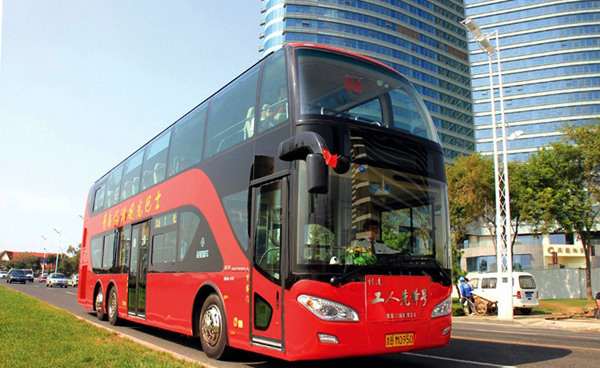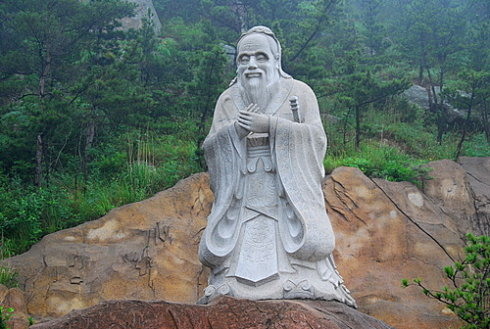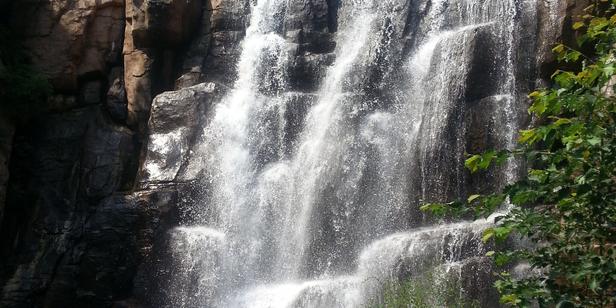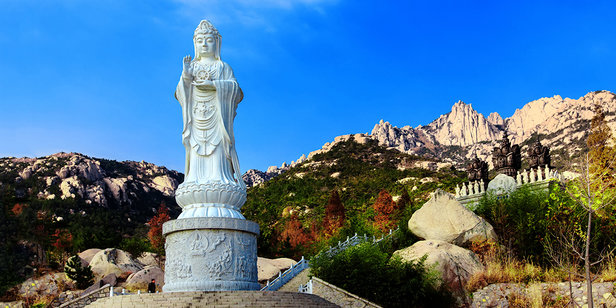Lushan connecting stone old man, play detailed Raiders
Today I recommend to you a line: Lushan + Shilaoren Bathing Beach; this line is obviously stronger, suitable for young people with plenty of energy.
Today I recommend to you a line: Lushan + Shilaoren Bathing Beach; this line is obviously stronger, suitable for young people with plenty of energy.
Recommended way to play Lushan
First of all, it is not recommended to visit the Lushan Mountain. Because any travel agency that organizes a day trip to Lushan will add other attractions (such as China's zero level, etc.), so it is noon when you arrive at the foot of Lushan Mountain. The time left for your climbing will be very tense. Your trip to Lushan may be even a horse. It’s not a good idea to watch flowers.
Therefore, if you travel to the mountains, you must act alone, and you must finish the meal before 7:30 and set off. Before 8:00, you will arrive at the No. 1 Shanxian Branch Road, next to Qingdao Railway Station, the bus station tourism distribution center. Within the "Qingdao City Sightseeing" Line 1 or Line 4 bus departure point to buy a ticket, so as not to delay the time.
How to get to Lushan
The starting point of Qingdao Metropolitan Tourism No. 1 and No. 4 buses is in the tourism distribution center, but the end of Line 1 is the Daishan Dahe East Customer Service Center, and the end of Line 4 is the Yangkou Customer Service Center. The difference is: If you take the No. 1 line, you can go to the south line to clear the Yangkou scenic spot, or the mid-line giant peak scenic spot; and take the 4th line, you need to reverse tour. You can take the line 1 and then take the line 4 to return to the city; the line 4 is the opposite.
Special reminder: Qingdao City Tourism Line 1 and Line 4 buses have very different running hours. There is one shift in the off-season and in the afternoon. The departure time of Line 1 is 8:50 in the morning, and the departure time of Line 4 is 8:30 in the morning, while the departure time of Line 1 and Line 4 in the afternoon is unified. It is 15:00; there will be more classes in the peak season.
Please call the Qingdao Jiaoyun Group's hotline 96650 or the station dispatch telephone 0532-82876868 for the round-trip departure time.
How to play Lushan
Lushan is very large, except for the southern line, which is clear--the two scenic spots of Yangkou and Zhongxian Jufeng, and there is also a north-line Beijiu water scenic spot. However, this line is relatively remote. If you want to take the bus, you need to transfer several times, even Lawton, so this article does not recommend, focus on the two scenic spots of the South Line and the Middle Line.
Among the famous mountains in the country, only Mount Lu is rising at the seaside. The coastline surrounding Lushan is 87 kilometers long and there are 18 islands on the coast. It is a famous Taoist mountain in China. The preserved Taoist Temple is the largest and the oldest in history.
1. The southern line is clear - Yangkou Scenic Area
The Yangkou Scenic Area consists of the Liuqing Scenic Area, Taiqing Tourist Area, Qipan Stone Tourist Area and Yangkou Tourist Area as shown in the above picture. The scenic spots include Nantianmen, Frog Stone, Abalone Island, Liuqinghe Beach and Dafu Island. Xiaofu Island, Taiqing Palace, Tan Waterfall Reservoir, Shangqing Palace, Mingxia Cave, Qipanshi, Huayan Temple, Lion Peak, Sheep Stone, Taiping Palace, Dillon East, Xiantao, Shouzifeng, Qitian Cave, etc.
[Buy Tickets ] After you arrive at the Lushan Dahe East Customer Service Center, please choose to purchase the Nanxian Liuqing-Yangkou Scenic Joint Ticket. After checking the ticket, take the scenic bus to start your journey.
[Bus ride] When taking a scenic bus, it is recommended that you sit at the right side of the window, as this will allow you to see the unrivaled sea view on the way.
Please keep your bills in good condition, because you still need to check the ticket when you leave the scenic spot. If you lose, you need to make a ticket.
The first stop of the car dealership is the Liuqing Scenic Area . This area is located in the southern part of Lushan Mountain. The peaks and mountains in the scenic area are towering, the valleys are long and long, and the black pine forests are thick and lush. The coastline, the horns, the reefs and the beaches are staggered. The sea and the kilometers traverse the east and west, which is a good place to watch the sea. In the scenic area, you can visit Nantianmen, Frog Stone, Abalone Island, Liuqinghe Beach, Dafu Island, Xiaofu Island and other attractions.
Frog stone -
Liuqinghe Beach -
Nantianmen, Changchun Ziqiu, the machine book -
After coming out of the Liuqing Tourist Area , you can reach the Taiqing Tourist Area . The Taiqing Scenic Area is located in the southeast of Qingdao Laoshan Scenic Area. The scenic spot is named after the famous Temple Taiqing Palace and is a national AAAA-level tourist area.
The Taiqing Palace is surrounded by mountains on three sides. When faced with the sea, the location is unique. It is surrounded by seven stalwart peaks. The main peak is “Laojun Peak”. The left side is Taoyuan Peak, Wanghai Peak and Donghua Peak. The right side is Chongyang Peak, Qitao Peak and Xiwang Peak. The east is Mt. The south is the blue bay, called "Taiqing Bay." Surrounded by the distant peaks and the nearby seven peaks, it blocks the cold air from the north, which creates a unique subtropical climate. The seasons are evergreen and the flowers and plants are fragrant. It is known as “small Jiangnan”.
Please go to the Eight Rivers, then go up the mountain, Path Tan Waterfall Reservoir, Shangqing Palace, continue to climb along the winding path to reach the famous "Mingxia Cave", there is an additional charge, the price is 5 per person yuan. Because it is a mountain road, it may be more tired. You can choose to take the tunnel to "Mingxia Cave", go back and forth for 80 yuan, and then go to the Taiqing Palace.
Yashui River -
Tan Waterfall Reservoir -
Shangqing Palace is a famous Taoist temple, in the southeast of the Lushan Mountain, referred to as Shanggong. It was founded in the early Song Dynasty and later destroyed in the mountain torrents. Between 1297 and 1307 (the Daedian period of the Yuan Dynasty), the Taoist Li Zhiming was rebuilt again, and the successive generations have been repaired.
The Shangqing Palace is a Taoist Taoist Quanzhen Taoist School. It is the only jungle temple in many Taoist temples in Qishan. Qiu Chuji, Liu Zhixuan, Li Zhiming and other Taoist people once went to the Qing Dynasty to make a statement.
Mingxia Cave is at the waist of Kunlun Mountain in the southern part of Lushan Mountain. From the bottom of the mountain to pick up the level, all the way to the road, one kilometer to the hole, you can also take the Taiqing cableway to skyrocket. The hole was excavated in Jinda Dianian, and the three-character "Mingxia Cave" was the title of the Qing Dynasty calligrapher Wang Xu. It is said that the original hole was tall and spacious, and Sun Ziyang, a Taoist in the Ming Dynasty, had quietly repaired it here; during the Kangxi reign of the Qing Dynasty, most of them fell into the ground.
The Dongdong megalith is still in existence, and the inscription is "Tianzhu Qixia". In front of the cave, the cliff is like a platform, so that it looks at the sea, and it is empty and vast; overlooking the cliff, the gully is vertical and horizontal. This is the case of Lushan Shengjing "Mingxia Sanya".
Climbing up from the back of the cave, the Xuanzhen Cave can reach the top of Kunlun (commonly known as Beida Top) and there is Tianchi.
Take the cableway to the Taiqinggong Scenic Area. Taiqing Palace is the largest Taoist temple in Lushan. It has a history of more than 2,100 years. Tickets for entrance to the city are subject to a separate ticket price of 20 yuan per person.
Taiqing Palace has the longest history and the most profound influence in many Taoist buildings in Lushan. The Taishan Palace in Lushan was built in 140 BC. In 905, under the efforts of several famous Taoist priests, it gradually became a certain scale. Since then, the building has been increasing. During the Yuan Dynasty, it became a true Taoist temple. It received strong support from the court and its status was rapidly improved. It was known as the second jungle after Beijing Baiyunguan.
During the Ming Dynasty, the famous Taoist Zhang Sanfeng once practiced here; it is said that Pu Songling, the author of "Strange Tales from a Lonely Studio", also lived here. There are many contents in the book, such as the famous "Lushan Taoist".
On the east side of the Sanguan Hall of the Taiqing Palace is a winter-resistant safflower tree with a height of 8.5 meters and a circumference of 1.78 meters. The age of the tree is more than 600 years. The flowering period is from the beginning of November to the middle of June. The snow is still red. Fire, the yellow is like gold, the leaves are green and green, and it is the precious ancient wood of Lushan. Pu Songling’s "Strange Tales from a Lonely Studio" contains a novel entitled "Xiangyu", in which the flower god "绛雪" in red is the tree.
In the back hill of the Taiqing Palace, there is a statue of Laozi up to 50 meters, which is the largest statue of Laozi in the world. He pointed to the sky and pointed to the ground, meaning to open up the earth.
The winding path around the Taiqing Palace is quiet -
In the meantime, I feel relaxed and happy.
The sea view in front of the Taiqing Palace is excellent -
Checkerboard stone tour area
From the Taiqing Palace area to the north, you can reach the checkerboard stone tour area.
The natural landscape of the scenic spot has a checkerboard stone, and the human landscape has the temple of the Qing Dynasty, Huayan Temple. Huayan Temple is the only existing Buddhist temple in the Lushan Mountain, also known as the “Huayan Temple”. The next is Huayan Temple Guanyin Square -
Huayan Temple Mountain Gate -
“Na Luo Yan Grottoes” is located on the northern slope of the top of Na Luoyan on the south side of Huayan Temple. The name of Naroyan Cave comes from Sanskrit, meaning that King Kong is strong.
If you have limited time, you can give up the sights of Nairoyan Cave and go directly to the Yangkou Tourist Area.
Yangkou Scenic Area
Yangkou Scenic Area is located in the northeast of Lushan Scenic Area. The main scenic spots include Taoist cultural landscape such as Taiping Palace and Julong Cave, and mountain scenery such as Shangyuan Mountain (including Shouzifeng and Qitiandong), Yangkou Bay and Diaolongji. The natural scenery of the bay, such as the peak of the mountain. If you don't want to climb the mountain, you can take the Yangkou cableway, 35 yuan per person per way, 60 yuan per person.
Julong Cave -
Shouzifeng -
觅天洞——
Tianyuan -
Taiping Palace -
Every time the indigenous people come here, they will involuntarily pick up Cao Cao’s Guanlanhai.
After going down from Shangyuan Mountain, you can go to Yangkou Customer Service Center and take Metro Line 4 to return to the city. In the morning, take the city tour line 4 to Yangkou. Please go to Dahedong Customer Service Center and take the Metropolitan Sightseeing Line 1 to return. Urban area.
In fact, if you want to swim through the four scenic spots in one day, it is too tired. Indigenous people think that it is better to focus on the two scenic spots of Taiqing Palace and Yangkou . Because these two scenic spots are called the essence of Lushan, they will swim through these two scenic spots. It is worthwhile.
Midline Jufeng Scenic Area
The giant peak, also known as the "dome", is the highest peak of Mount Lu. It is a sunrise here. The so-called "Jiufeng Xuzhao" is this.
The picture below shows the tour route of the Laoshan Jufeng Scenic Area.
Description: 1 is the Dahedong Customer Service Center; 2 is the cableway station; 3 is the cableway station; 4 is the highest point on the ring road - Lingqifeng.
From location 1 to location 2 is a section of Panshan Road, with a length of eight kilometers. It is necessary to take the scenic bus to the mountain and build a large number of human sculptures along both sides of the road.
Sculpture along the way -
Sculpture along the way -
The car is 15 minutes from the entrance to the scenic spot, which is also the lower station of the cableway, which is about 400 meters above sea level.
From position 2 to position 3: When you get off the sightseeing car, there are two ways to go up the mountain. One is to take the cableway and the other is to walk up the mountain. During this journey, the cableway takes about ten minutes and takes about an hour to walk. I personally feel that the road is long and the nearby Tiewa Temple site near the cableway is steep. Please choose to walk up the mountain. .
Landscape turtles along the road -
From position 3 to position 4: After reaching the station on the cableway (about 700 meters above sea level), you will cut into the core tour route of the Kyoho Tourist Area - the round tour route, and set the gates along the line. At this point, you need to pay attention, and friends who feel physically weak can return in the same way; friends with plenty of energy can choose to move on.
The monument of Lushan - the natural monument. The natural monument is the first stone scene in the Jufeng tourist area. This tall and towering square stone sarcophagus is about 40 meters high and about 10 meters wide. The dome is convex and flat below. The natural monument of Jufeng was originally a sudden mountain peak. Due to the erosion of the glacier movement, the surrounding rocks were towed away by the glacier, and now only the shadow of this alone is left behind.
Along the natural monument, it is the door to one of the Eight Diagrams Gates. "Leaving" is one of the Eight Diagrams of the Book of Changes. The symbol of the shackles on the door is composed of two haws sandwiching the middle haze, which represents the fire in nature; it is located in the south by orientation.
Arrive at Sanchakou and look at the "First Sea of the Sea" stone carving on the observation deck. The stone inscription was written by Mr. Wu Zhongqi, a famous Chinese calligrapher at the age of 95, and his writing power is vigorous, just like a dragon and a phoenix.
Tricks. The two mountains are sandwiched, and the Lingqi Peak on the east side is a place where tourists gather. There is a line of Lingqixia in the lower reaches. The congenital bridge crosses the gorge volley, and the Liuhe Pavilion is high in the cliff top. The smoke is filled with clouds, which is like a fairyland.
Dengling Qifeng, also known as "Xiantai Peak", is located in the southeast of Jufeng. It is cut and thin, and it is like a flag. Because the top of the mountain has three small peaks and things arranged, the common name is "three layers of scorpions."
Overlooking the Lingqi Gorge -
Overlooking the congenital bridge and Liuhe Pavilion -
Looking up at the congenital bridge -
Xia Ling Qifeng, continue to move forward, pass the earthquake. The "shock" of Zhenmen is also one of the "Yi Jing" gossip. It consists of two hazes on the top and one impotence below. It is in the east and represents thunder in nature. The uplink of the Zhenmen couplet is "the sea wave is suspected of being on the shore", and the lower line is "the fog is the fly cloud."
Tricks . The sarcophagus and the caves shuttle, and there are often people who have no way to go to the mountains, and the peaks and turns turn, and they suddenly feel cheerful.
Panshan Plank Road -
On the rock wall of Kanmen, two huge "Fu" characters with the calligraphy of Wang Xizhi are engraved, and the meaning of "Fu Fu is still to the present".
Kanmen . "Kang" is one of the "Yi Jing" gossip, located in the north, its symbol is a combination of two haze sandwiches in the middle of the Yangshuo, representing water in nature.
Dry door.
The road leading to the gate is called "self-improvement road." The self-strengthening road is taken from the Yijing biography: "Tian Xingjian, the gentleman is self-improving." "Redemption" is also one of the "Yi Jing" gossip, which is composed of two Yangshuo holding a haze. Representing "Ze" in nature is the precious "wetland" that maintains biodiversity today.
Jufeng’s “Wind Bridge Dangerous Crossing” is a suspension bridge with a length of more than 100 meters and a high hanging over a deep valley.
Kunmen . "Kun" is one of the Eight Diagrams of the Book of Changes. It consists of three hazes, representing the land that raises all things in nature, and is located in the southwest in azimuth. On the Jufeng Tour Circle, Kunmen is located just southwest of Jufeng.
The Gonggongpopo stone is located at the Jufeng Cableway Station, next to the stone carving of the “First Sea of the Sea”. This peak is like a pair of old wives and old wives. I watched for thousands of years here, hence the name "Gonggong mother-in-law stone."
Shou Xingshi is located in the northeast of Lingqi Peak. The stone height is nearly 100 meters. The long bones of the crane are long and the shoulders are slightly drooping. The five senses are like a living, sitting in the mountains. Such tall, realistic, pure natural stones are rare.
It takes a long time for Jufeng to play around the whole line. It takes about six hours or more. Please arrange the trips reasonably by friends. Friends who want to take the cableway down the mountain should pay attention to the operation time of the ropeway. Friends who accompany the elderly and children up the mountain should pay special attention.
Backhaul connection - stone old man
How to travel to the old stone
After the tour to Lushan, whether you take the city tour No. 1 or Line 4 bus back to the city, you can get off at the Shilaoren Bathing Station and play in the bath to eliminate the fatigue of the day.
Stone old man recommended reason
The stone man bathing beach is clear and sandy, and the beach is flat and gentle. It is the largest bathing beach in Qingdao. In the south side of the sea cliff at the foot of the northernmost mountain of the bathing ground, there is a 17-meter-high stone pillar in the shape of an old man sitting in the blue sea, known as the "stone old man."
After the play, you can take the Metro Line 2 (direction of Zhiquan Road) to get off at Wusi Square Station, then change to Metro Line 3 (direction of Qingdao Railway Station) to Qingdao Railway Station. Get off the bus, take the E exit and exit the station. Walk about 240 meters to the east and then transfer to the train station.

































































